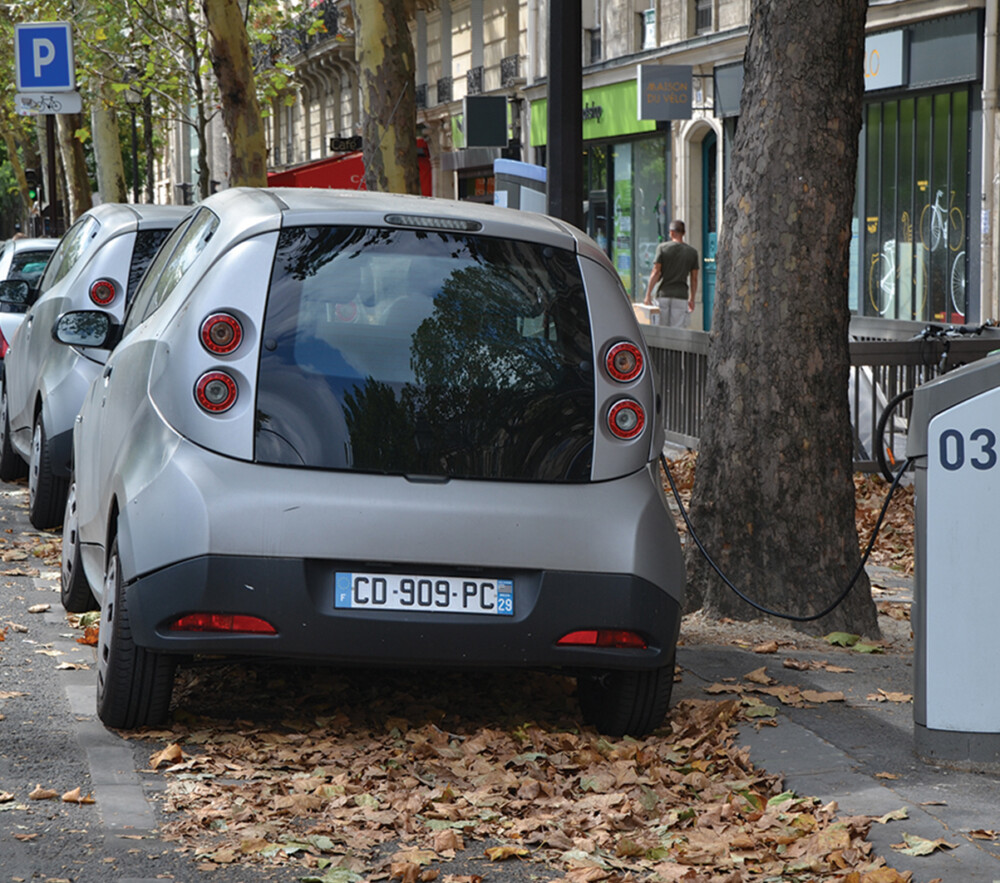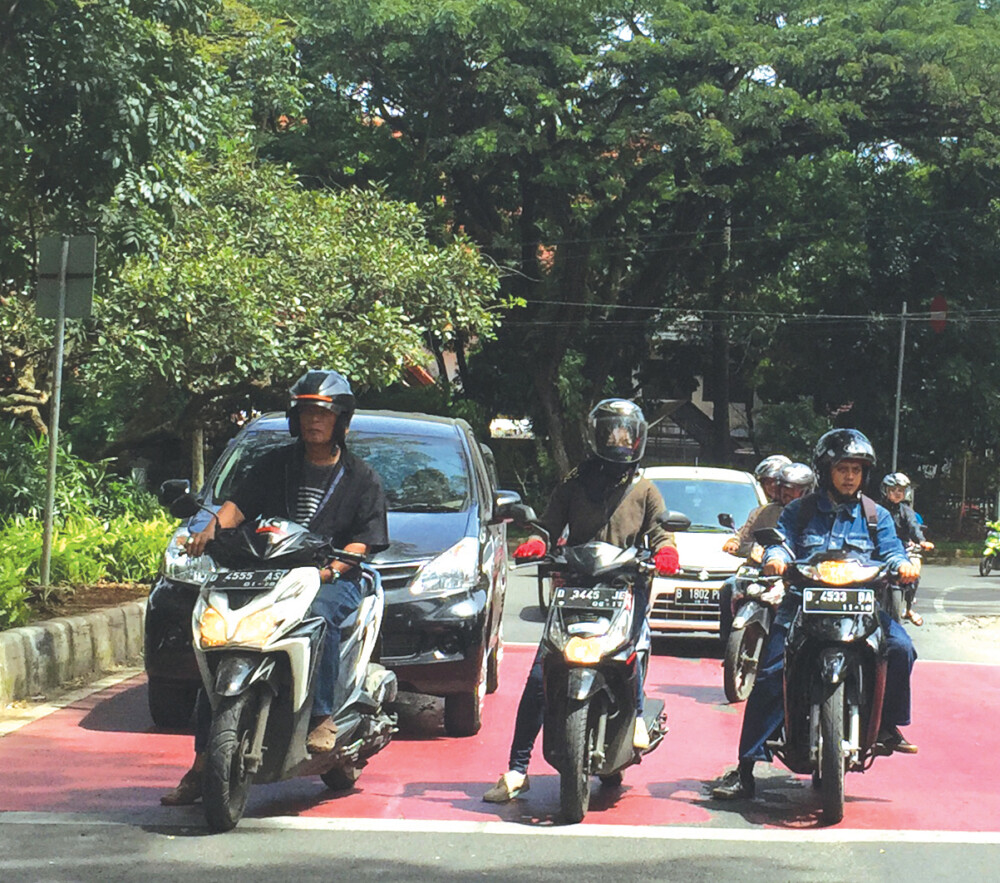-
About Streets
- Introduction
- Defining Streets
-
Shaping Streets
- The Process of Shaping Streets
- Aligning with City and Regional Agendas
- Involving the Right Stakeholders
- Setting a Project Vision
- Communication and Engagement
- Costs and Budgets
- Phasing and Interim Strategies
- Coordination and Project Management
- Implementation and Materials
- Management
- Maintenance
- Institutionalizing Change
- Measuring and Evaluating Streets
-
Street Design Guidance
- Designing Streets for Great Cities
- Designing Streets for Place
-
Designing Streets for People
- Utilities and Infrastructure
- Operational and Management Strategies
- Design Controls
-
Street Transformations
- Streets
-
Intersections
- Intersection Design Strategies
- Intersection Analysis
- Intersection Redesign
- Mini Roundabout
- Small Raised Intersection
- Neighborhood Gateway Intersection
- Intersection of Two-Way and One-Way Streets
- Major Intersection: Reclaiming the Corners
- Major Intersection: Squaring the Circle
- Major Intersection: Cycle Protection
- Complex Intersection: Adding Public Plazas
- Complex Intersection: Improving Traffic Circles
- Complex Intersection: Increasing Permeability
- Resources
Global Street Design Guide
-
About Streets
- Introduction
- Defining Streets
-
Shaping Streets
Back Shaping Streets
- The Process of Shaping Streets
- Aligning with City and Regional Agendas
- Involving the Right Stakeholders
- Setting a Project Vision
- Communication and Engagement
- Costs and Budgets
- Phasing and Interim Strategies
- Coordination and Project Management
- Implementation and Materials
- Management
- Maintenance
- Institutionalizing Change
-
Measuring and Evaluating Streets
Back Measuring and Evaluating Streets
-
Street Design Guidance
-
Designing Streets for Great Cities
Back Designing Streets for Great Cities
-
Designing Streets for Place
Back Designing Streets for Place
-
Designing Streets for People
Back Designing Streets for People
- Comparing Street Users
- A Variety of Street Users
-
Designing for Pedestrians
Back Designing for Pedestrians
- Designing for Cyclists
-
Designing for Transit Riders
Back Designing for Transit Riders
- Overview
- Transit Networks
- Transit Toolbox
-
Transit Facilities
Back Transit Facilities
-
Transit Stops
Back Transit Stops
-
Additional Guidance
Back Additional Guidance
-
Designing for Motorists
Back Designing for Motorists
-
Designing for Freight and Service Operators
Back Designing for Freight and Service Operators
-
Designing for People Doing Business
Back Designing for People Doing Business
-
Utilities and Infrastructure
Back Utilities and Infrastructure
- Utilities
-
Green Infrastructure and Stormwater Management
Back Green Infrastructure and Stormwater Management
-
Lighting and Technology
Back Lighting and Technology
-
Operational and Management Strategies
Back Operational and Management Strategies
- Design Controls
-
Street Transformations
-
Streets
Back Streets
- Street Design Strategies
- Street Typologies
-
Pedestrian-Priority Spaces
Back Pedestrian-Priority Spaces
-
Pedestrian-Only Streets
Back Pedestrian-Only Streets
-
Laneways and Alleys
Back Laneways and Alleys
- Parklets
-
Pedestrian Plazas
Back Pedestrian Plazas
-
Pedestrian-Only Streets
-
Shared Streets
Back Shared Streets
-
Commercial Shared Streets
Back Commercial Shared Streets
-
Residential Shared Streets
Back Residential Shared Streets
-
Commercial Shared Streets
-
Neighborhood Streets
Back Neighborhood Streets
-
Residential Streets
Back Residential Streets
-
Neighborhood Main Streets
Back Neighborhood Main Streets
-
Residential Streets
-
Avenues and Boulevards
Back Avenues and Boulevards
-
Central One-Way Streets
Back Central One-Way Streets
-
Central Two-Way Streets
Back Central Two-Way Streets
- Transit Streets
-
Large Streets with Transit
Back Large Streets with Transit
- Grand Streets
-
Central One-Way Streets
-
Special Conditions
Back Special Conditions
-
Elevated Structure Improvement
Back Elevated Structure Improvement
-
Elevated Structure Removal
Back Elevated Structure Removal
-
Streets to Streams
Back Streets to Streams
-
Temporary Street Closures
Back Temporary Street Closures
-
Post-Industrial Revitalization
Back Post-Industrial Revitalization
-
Waterfront and Parkside Streets
Back Waterfront and Parkside Streets
-
Historic Streets
Back Historic Streets
-
Elevated Structure Improvement
-
Streets in Informal Areas
Back Streets in Informal Areas
-
Intersections
Back Intersections
- Intersection Design Strategies
- Intersection Analysis
- Intersection Redesign
- Mini Roundabout
- Small Raised Intersection
- Neighborhood Gateway Intersection
- Intersection of Two-Way and One-Way Streets
- Major Intersection: Reclaiming the Corners
- Major Intersection: Squaring the Circle
- Major Intersection: Cycle Protection
- Complex Intersection: Adding Public Plazas
- Complex Intersection: Improving Traffic Circles
- Complex Intersection: Increasing Permeability
- Resources
- Guides & Publications
- Global Street Design Guide
- Designing Streets for People
- Designing for Motorists
- Overview
Overview



Motorists use automobiles and motorbikes to move around the city. These vehicles can be used as for-hire vehicles (taxis), shared vehicles (car share and car pool), or personal vehicles. While these uses have different curbside needs, they have similar geometric needs and are addressed together in this section.
Traditionally, personal motorized vehicles, and particularly automobiles, are a major consumer of street space. Vehicles occupy space when moving in travel lanes and in on-street parking spots. When street space is unpriced or unrestricted, congestion emerges, increasing travel times and pollution, reducing space for other uses, and negatively impacting livability.
Travel lanes for motorists are often mixed facilities shared by cars, buses, and cycles. They are frequently complemented with curbside parking spaces, curb zone facilities such as parking meters, intersection elements such as stop lines and traffic signals, and wayfinding and speed signs across the corridor for navigation and compliance.
Personal motor vehicles are often restricted on various corridors such as pedestrian zones, transit streets, and at times on shared streets.
When street space is unpriced or unrestricted, congestion emerges, increasing travel times and pollution, and decreasing livability.
Speed
The speed of moving vehicles is directly related to the safety of the street and other users. While cars on highways are capable of higher speeds with relatively lower risk, these capabilities become a liability to occupants and people outside the vehicle in urban settings.
Urban streets should be designed to support a maximum of 40 km/h. In the densest urban areas and when sharing a lane with cycles, speeds should be at or below 30 km/h. When shared with pedestrians, it may be necessary to limit speeds to 15 km/h or less. The grey area on the bar below represents speeds in non-urban areas. See: Design Speed.

Variations
Vehicle size and fleet characteristics vary around the world, largely in response to street design, parking, regulatory characteristics, and wealth. In many cities, vehicles must frequently navigate narrow or historic street networks or have limited parking availability, encouraging smaller average fleet sizes and the use of motorized two-wheelers. Large cars and light trucks used as personal vehicles are common where urban streets, especially lane widths, are relatively large. Ensure vehicles of all types meet global safety standards to support the safety of vehicle occupants as well as other street users.
Motorized Two and Three Wheelers
Scales can vary, but dimensions are generally between 1.5–2.3 m in length and 0.5–1 m in width. Motor scooters and mopeds are smaller and less powerful than motorcycles and have low top speeds. These are often used as an alternative to cars for reasons of cost and convenience, especially where collective transport is limited.

Automobiles
Personal automobiles come in many sizes, depending on type and context. Electric cars have potentially sustainable power sources and are sometimes used in car-share programs that allow access to motor vehicles at lower personal and social impact. Accessible vehicles are specially designed for use by people with disabilities and are especially important where collective transit is not available. Taxis are automobiles used as a for-hire service.

City Cars and Microcars
City cars and microcars are a form of limited-use vehicle, usually 2-seaters with some freight capabilities. These vehicles are often used in car-share systems and have lower parking impacts than full-size cars. They have lower emissions and less skill requirements than motorcycles.

Adapted by Global Street Design Guide published by Island Press.
Next Section —